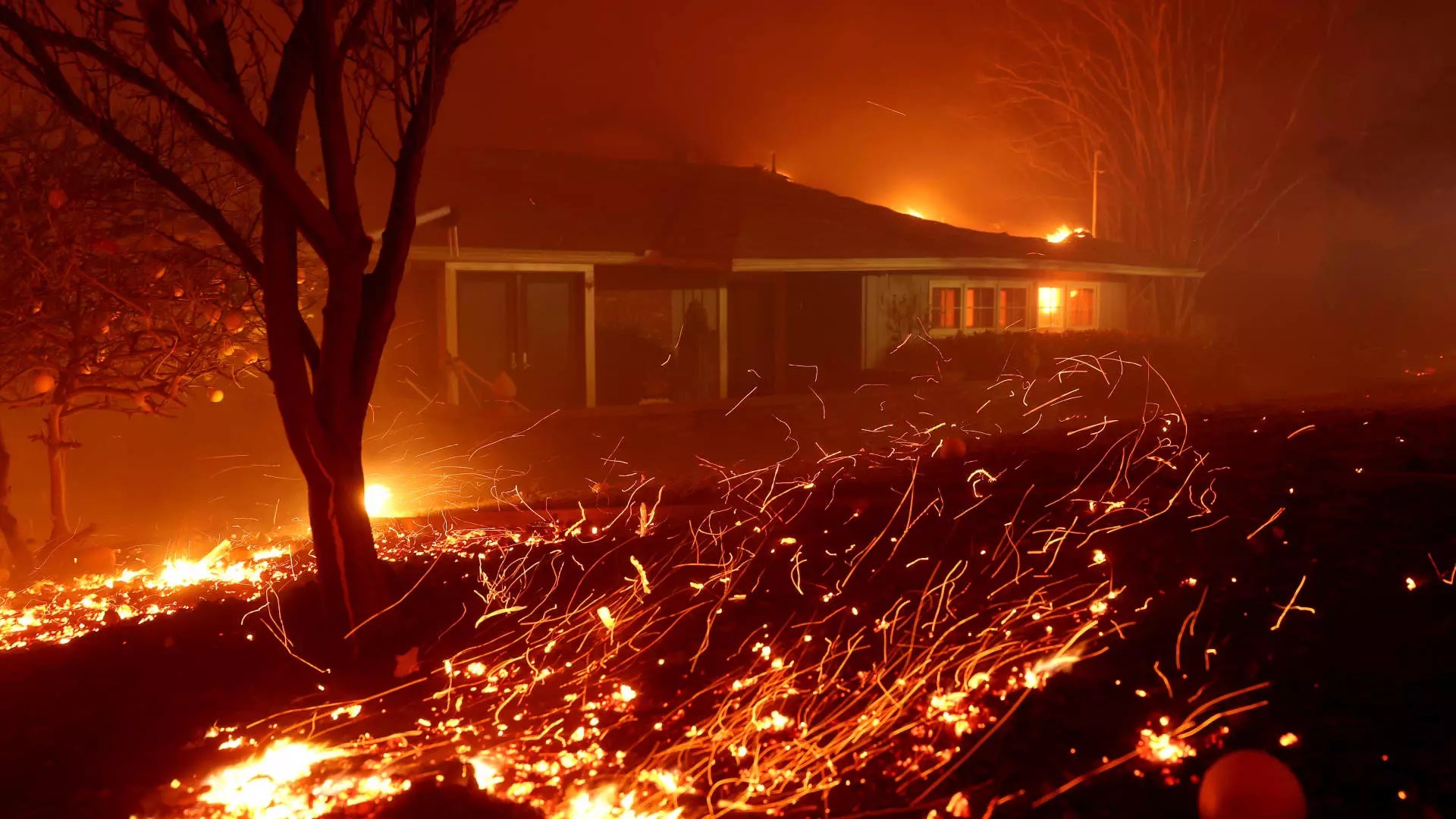In recent years, the specter of climate change has loomed large, bringing with it an unsettling new reality: the financial implications of increasingly frequent and severe weather events. As evidenced by the devastating wildfires in Los Angeles, the reshaping of real estate values and insurance markets is experiencing an urgent recalibration. While the immediate and total financial toll of these disasters remains to be calculated, experts are already sounding alarms about the potential long-term effects on the national and local real estate markets.
The assumptions underlying the real estate market are rapidly changing as climate risks escalate. Analysts at First Street, a firm focused on climate risk assessment, have predicted a staggering $1.47 trillion in losses for American homeowners by 2055. The sobering notion that 84% of U.S. residences could witness diminishing values stands as a clarion call for both homeowners and investors. Jeremy Porter, leading the climate implications research at First Street, asserts that climate change is no longer a hypothetical scenario but a tangible force with far-reaching consequences across regional economies and real estate markets.
A significant contributing factor to the changing dynamics is the impact on home insurance costs. It is estimated that average insurance premiums could increase by 25% over the next three decades, stemming from a combination of insufficient risk pricing in the market and the intensified threats posed by climate change. While the average decrease in home values may be modest at -3%, certain regions, particularly vulnerable to natural disasters, could face catastrophic declines, with some areas in Texas, Louisiana, and Florida projected to lose up to 50% of their value.
The instability of the insurance market cannot be understated as it acts as a barometer of overall market health. Dave Burt, the founder of DeltaTerra Capital, identifies a disturbing trend: as insurance premiums rise due to climate risk, home values will likely follow suit. A decrease in market price is anticipated, echoing the financial instability felt during the 2008 housing crisis. Burt predicts that within the next five years, 20% of U.S. homes could devalue due to climate impacts, a projection that raises serious concerns about future homeownership stability.
The rising costs of insurance and property maintenance, combined with additional taxes in certain communities to fund resilience projects, could drive more individuals away from homeownership. Furthermore, Senator Sheldon Whitehouse has echoed these anxieties, noting that the crumbling insurance infrastructure poses immediate risks to the economic landscape. Without proper adjustments to insurance practices and market valuations, the potential for widespread economic disruption looms large.
Mortgage giants like Fannie Mae are beginning to recognize the pressing need to incorporate climate risk into their underwriting processes. While the company has yet to adopt a comprehensive strategy for evaluating climate threats at the property level, the fact that they are now studying such risks indicates an industry-wide acknowledgment of changing realities. However, the lag in addressing this imperative could mean that many homeowners are unknowingly entering volatile markets that do not accurately reflect the true risk of their properties.
Ben Keys, a finance professor at the Wharton School, notes that the rapid escalation of climate-related disaster risks necessitates a re-evaluation of asset values across the real estate spectrum. As foreclosures follow major disasters—such as the 46% spike seen post-Hurricane Sandy—these pressures could exacerbate the market’s instability, signaling that the tide is turning not just for homeowners, but for entire communities.
As communities grapple with the inevitable shifts in property values and insurance costs, a new equilibrium must be sought to stabilize the market. Investors and homeowners need to adapt to the changing landscape—whether that means hedging against these risks or seeking out properties with mitigating factors against extreme weather events.
The interplay between climate change, real estate, and the financial industry represents a complex and evolving narrative. The challenges ahead are significant, from rising insurance costs to changing mortgage practices and potential community tax adjustments. Yet, amid these tensions lies an opportunity to reshape how we approach housing and investment in light of climate risks, ensuring future resilience.
While the transformation may present difficulties, it is essential for policymakers, financial institutions, and homeowners alike to engage proactively in rethinking strategies that will enable sustainable growth and mitigate the challenging impacts of an ever-changing climate.


Leave a Reply